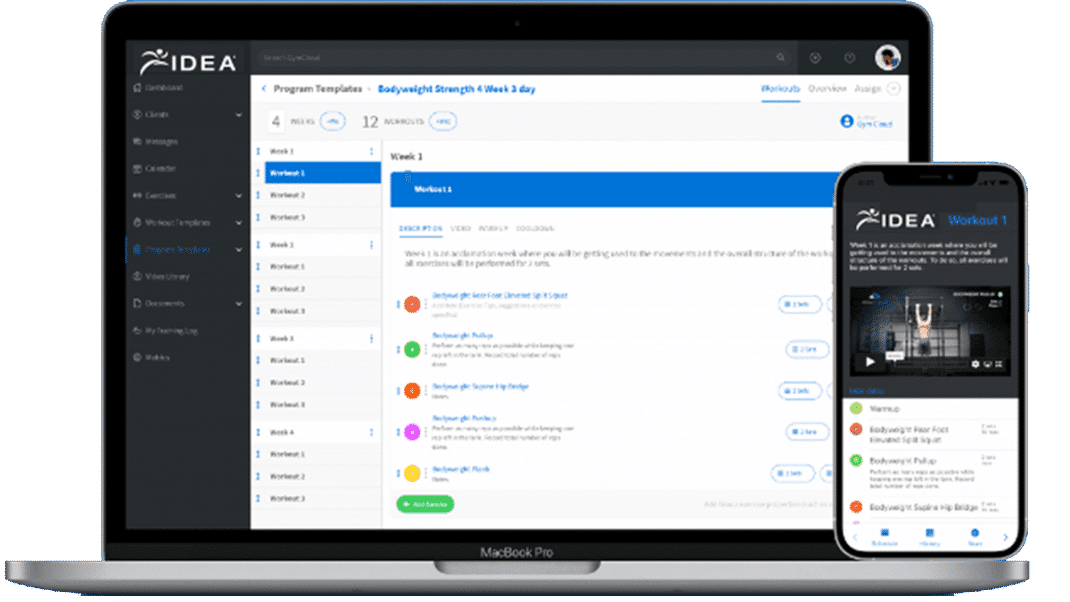How to Breed Staff Loyalty
Increase staff retention by hiring the right people and purposely training them.

Has your business experienced faster staff turnover than you’d like? Are you about to hire new staff? Do you want your fitness pros to remain loyal to your facility? You can beat the high-turnover odds in the fitness industry. The key is to find qualified pros who fit your business and then set them up for success, giving them specific training for their positions and clearly communicating your expectations. Consider the hiring and onboarding system I’ve developed over the past 8 years of running my own business.
Recruiting: Finding Your Team
When it comes to hiring the right staff members for your business, you must first go out and look for them. Good people are all around us, but they typically aren’t looking for a job, because they already have one. So don’t just wait for high-level pros to apply: Recruit them! Find talent by taking other people’s classes and proactively looking for great employees there.
Interviewing Candidates
This is the process I recommend. It has helped us find staff members who fit well with our facility.
- See if your candidates have the basics. Do they have good character? Listen to how they talk about their previous employer, co-workers and people in general. Do they possess a positive attitude and good manners? Do they genuinely listen? You can tell a lot about candidates based on their energy when they walk into a room. Then, of course, do they have the credentials and the experience you want? If we answer yes to these questions, we meet with those candidates.
- Conduct an initial interview. Get to know the applicants. Ask them questions about who they are and what they are passionate about.
- Give candidates free, full access to all of your services for 10 days. Doing this will allow you to watch candidates engage organically with people. You’ll see how many classes they take, which services they use, and what they do and say. This is the easiest way to see if they are the type of people you want to have working for you. When we do this, we’re looking to see how candidates naturally connect with people and how much they are willing to get involved when they have full access and a complete range of resources. Do they take full advantage of the opportunity to engage, and do they show how much they want to learn about the team? If candidates use at least eight of our services (such as multiple classes, personal training, small-group training, Triple C Combat Studio and recovery lab), then we set up a practical interview.If they use fewer than eight services, we don’t bring them back. If we give candidates open access to our facility, we want to make sure they know about everything we do. If they aren’t interested in checking us out thoroughly while they are trying to get a job with us, then typically they won’t do it if they get the position. Giving free, full access also gives us a chance to observe candidates as potential staff members. Anyone can be wonderful once for an interview; we want to see how our candidates are as athletes and how well they respond to being coached.
- Do a practical interview. Watch applicants in an “ideal” training session using their favorite tools, and observe what their idea of their “best” is. A practical interview will allow you to see the gap between candidates’ skills and what you need your trainers to know. All of our coaches take part in this phase; deciding if candidates are the right fit for our business is a decision we make as a team. We go over our active coaching checklist, review candidates’ attendance during the full-access period, and consider their engagement with staff and clients. Then, we either hire them or let them know they didn’t get the job.
Integrating a New Staff Member
Our onboarding process is just as thorough as our hiring process. Here’s what we do:
Set Up the Team to Win
When we onboard new staff, we don’t throw them out into the jungle and tell them to figure out what to do on their own. We set them up to win. We assume nothing, and we give them all of the training, tools, guidance and education they’ll need to succeed with us. This process has given us a large competitive advantage in retaining great staff.
Make New Staff Part of the Family
When I worked for a commercial gym, I felt sorry for the new personal trainers and front-desk staff. They were always told to “walk the floor,” meet the clients and correct people’s form. This set them up to fail—and to do so miserably. Onboarding new staff is like welcoming your friends to a family gathering. You know they’ll feel out of place at first, so you want to be sure everyone knows who they are and makes them feel welcome.
We introduce new staff to our fitness community, and we give current staff personal and professional information about the newcomers. Our entire team welcomes them. Each staff member writes them a note, giving them a personal welcome and a tip for success. Their team lead goes over their personal goals with them and puts them on a plan to help them succeed.
Managing Your Team
One of my biggest mistakes early on was not having clear standards for our team. As part of setting up new staff—and all staff—to win, I now communicate clear standards. Everyone knows our mission and values. Ambiguity is the number-one killer when it comes to growing your team and your business. People need to know not only what the goals are but also how to achieve them. Assuming that people know what to do at all times and in all situations is ineffective leadership. Staff should always know their roles and responsibilities.
Here’s how we set clear standards:
- We’ve developed a company mission and core values.
- We make sure everyone in our organization knows the company’s mission and core values.
- We update processes, systems and standard operating procedures whenever necessary.
- We’re transparent, communicating quickly when a standard is broken.
Giving Regular Feedback
You can’t manage what you don’t measure. Not offering your team feedback means you’re not protecting them from making more mistakes and you’re not helping them improve. Feedback gives us the ability to grow. However, your company culture must not be driven by ego or titles; if it is, no one will take the feedback positively.
As I look back on the past 8 years of my business, I notice that our growth was directly related to how much and how often we were communicating regularly. On the flip side, when we didn’t conduct regular feedback meetings, we saw a drop in business—and a drop in employee morale. Employees want feedback and want to be coached. As uncomfortable as it may be to have a difficult conversation, people will process the information from that conversation and typically come back stronger. As leaders, we must take 100% responsibility and ownership when things don’t go right, and we can help solve any problem by increasing the amount of communicating we do.
Here’s the bottom line about communication:
- Productivity follows consistency and frequency. When we started to have weekly and daily trainings, not only did our business grow, but team morale and camaraderie improved as well.
- Staff have a difficult time handling inconsistent feedback. For many people, no news is good news. If they haven’t received any feedback, then they assume they are performing well. By consistently holding weekly meetings and regularly giving personal feedback, you enable people to make the changes they need so they can grow as quickly as possible.
- Feedback is the ultimate sign of respect and leadership. Giving feedback shows your team members that you care about them and their professional development.
Serving Your Team
Treat your staff better than you treat your clients. Many people don’t know how to give excellent service, because they have never felt what it’s like to receive outstanding service. When we go above and beyond for our team, more often than not they will go above and beyond for our clients.
Make sure that you
- know your staff members’ personal and professional goals;
- provide the right resources for your staff to grow (invest in their journey by paying for all or some certifications, continuing education, sales training courses, and more); and
- offer in-house weekly training.
Retaining Staff
Holding onto your best staff members doesn’t happen magically, but you can set the stage for it. Set clear expectations, consistently train your staff so they excel at their jobs, and promptly discuss any behavior that doesn’t meet your company’s vision and mission. With these in hand, you’ll go far in keeping your employees.
Meetings and Staff Training
Everyone does not need to be a part of every meeting; don’t waste people’s time on topics that aren’t relevant to their jobs and performance. Some meetings are “need to know,” and some are “need to do.” All need-to-do meetings should be practical trainings. An example is how to improve the greeting at the front desk when staff members are engaging a customer. Only front desk staff should participate in this training.
Here’s what I’ve found works best for meetings and trainings:
One-on-one meetings should be done quarterly. In the first one-on-one meeting of the year, review the staff member’s goals and create an action plan that you can hold the person accountable for when the two of you have subsequent quarterly meetings. Most people don’t envision a long-term career plan for themselves in this field. This is why the turnover rate in the fitness industry overall is every 3–4 years. Coach your trainers on personal energy and business efficiency management. We have staff go through our business game plan, so they understand the importance of every action they take and how their actions relate to their goals.
Targeted trainings should be done at least weekly and should focus on the specific job someone is doing. Coaches should be participating in practical training sessions each week to make them better coaches. [Click here if you’d like to see a sample training calendar.] Before we send out the work schedule for our coaches each month, we provide our practice and training schedule. We want to ensure that whoever is coaching is getting frequent training, so everyone continues to grow and stay sharp. You can’t just tell people to “have more energy”; they need to practice it.
Your in-house certification and training are the Bible. Each weekly staff training should be based on information in your training manual. As your business evolves, you must update your systems and always track your training sessions. Doing so gives you the opportunity to track your employees’ education and engagement objectively. During your individual reviews with team members, you want to be able to present facts based on each fitness pro’s objectively measured effectiveness and engagement as these relate to the company’s policies and goals.
Brian Nunez
Brian Nunez is an internationally recognized industry leader and award-winning presenter, inspiring coaches, companies and clients all over the world to live a focused, fit and free lifestyle. He is a best-selling author, Nike master trainer and successful entrepreneur, as well as one of the most sought after coaches in the world specializing in athletic performance, mental conditioning and business leadership. He is the founder of FNS Training Center, voted Silicon Valley's top training facility in 2016—2018, providing a one-of-a-kind team-training experience, along with personal training, nutrition coaching and mental conditioning.





